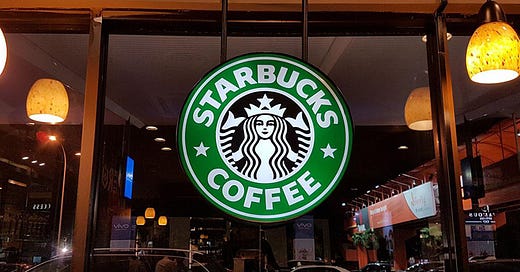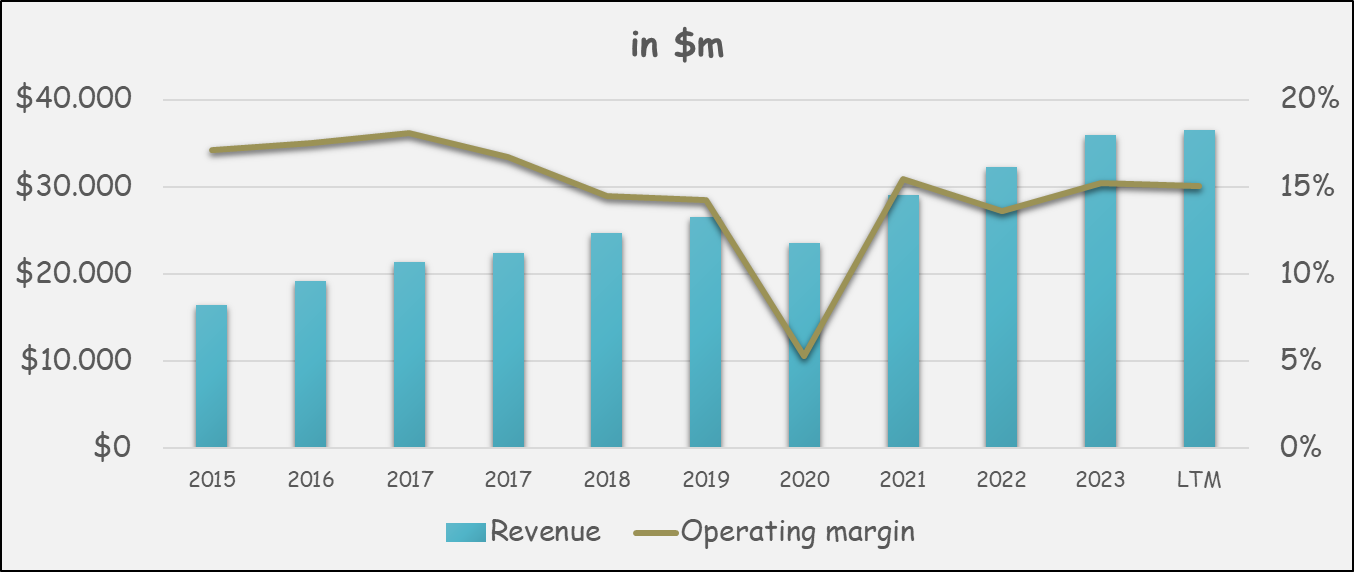1.0 Introduction
Starbucks SBUX 0.00%↑ isn't just a coffee chain; it's a place where your drink comes with a version of your name on the cup. While this small detail doesn’t change the quality of the product, it has a big impact on customers:
Personalization - People naturally crave recognition, and this simple interaction taps into that need, making the experience feel more personal, even if it is just a name on a cap.
Customer engagement - Calling out names for orders, often with humorous misspellings, creates a memorable experience that extends beyond the store. Countless social media posts about these misspellings have gone viral, and this kind of engagement works to Starbucks' advantage.
The customer-centric culture is what allowed the company to grow to almost 40,000 locations worldwide (~18,000 in the U.S.).
2.0 The struggle
Starbucks is perceived as a company with a strong brand.
But is that true?
What does it mean?
What does a strong brand bring to the table?
A strong brand has pricing power. It can charge premium prices and raise them in an inflationary environment, without experiencing a decline in the quantity of products (or services) sold.
The revenue formula for a company of this kind is simple:
Revenue = Quantity of products sold x Price.
Over the last decade, there have been some inflationary times.
Based on Finance Buzz, Starbucks increased the prices of their products by 39%, the lowest among the chains included in the research. This is slightly above the inflation rate, so it can be argued that the company managed to fully pass the costs to the final customer.
However, the second part of the equation was the quantity. A company with strong pricing power should not experience a decline in the amount of products (or services) sold. Unfortunately, this isn’t true for Starbucks.
The company has experienced lower revenue for two quarters in a row compared to the same quarters in the prior year. Their comparable store sales have decreased, meaning they bring less revenue per store despite the price increase. This isn’t a characteristic of a company with a strong brand and pricing power.
The CEO at the time, Laxman Narasimhan had a terrible CNBC appearance after the Q2 results. His explanation for the poor results was “We didn’t communicate the value we provide” - Which I find ridiculous. I don’t think the reason for the poor results is lack of communication.
But, it gets worse. In the quarterly, release, there was a section related to the strategic priorities.
The one that caught me by surprise was “Become truly global”. What does this even mean? Isn’t a company with ~40,000 locations “global” enough?
3.0 The actual reasons for the struggle
So, what is happening? Why is Starbucks struggling? While studying the company in depth, I’ve identified the following 4 reasons:
More is not always better - The menu continues to expand, offering more options and customizations. When the orders start shifting away from standard to customized, it leads to longer times to prepare a beverage. This leads to:
Fewer drinks are prepared (and ultimately sold) per hour.
Longer waiting times.
From a financial point of view, the cost per beverage goes up, and then it is passed on to the final customer. However, why should the customers pay more? What changed? For many, the waiting time increased. Ultimately, many customers (including loyal ones) decided that the current value for money offered by Starbucks wasn’t worth it, and looked for alternatives.
China's competitive landscape - As the second-largest market, it decreased a 14% in the latest quarter. The local rivals have been undercutting Starbucks in price.
Mobile app disappointment - Mobile orders account for roughly a third of Starbucks’ U.S. orders. This leads to a lot of customers simultaneously waiting for their orders, with overwhelmed baristas trying to keep up with it. However, there is also another psychological aspect. The total waiting time comprises of:
Order time
Preparation time
Most customers remember “waiting” as the time between placing the order and receiving the beverage. With mobile apps, the order is done without having to wait in line and although the total waiting time is the same, the preparation time is longer. Reducing the order time isn’t a benefit that stands out.
Worsening reputation - In 2021, employees started organizing and forming a labor union, motivated by concerns over workplace conditions, wages, unpredictable schedules, and overall job security. Starbucks has been accused of using aggressive tactics to prevent unionization, via anti-union messaging, store closures and firings, and even increased surveillance and intimidation. As of 2024, the company continues to face legal challenges from the NLRB (“National Labor Relations Board“) and ongoing unionization efforts.
4.0 The solution (?)
On August 13th, 2024, Starbucks announced that Brian Niccol has been appointed chairman and CEO of Starbucks, starting September 9th, 2024.
This is been seen as part of Elliott Management’s activist campaign.
Brian Niccol is the 4th CEO of Starbucks in the last 3 years.
The share price was up 24% on this announcement, which shows the market sentiment of this decision. Brian has been the CEO of Chipotle since 2018 and the CEO of Taco Bell before that. He has extensive experience in operations and is expected to bring new energy and ideas.
There will be plenty of similarities between his past roles and this one, especially focused on improving efficiency and cost-reduction, given his experience in digital improvement and online/mobile app ordering.
On September 10th, his 2nd official working day, he shared a letter to all partners, customers, and stakeholders with 4 key areas of focus:
Empowering the baristas to take care of the customers
Get the morning right, every morning by delivering outstanding drinks and food, on time, every time.
Reestablishing Starbucks as the community coffeehouse committing to elevate the in-store experience, ensuring the spaces reflect the sights, smells, and sounds that define Starbucks.
Telling the Starbucks story
In addition to this, he mentions that investments in technology are being made, to enhance the customer experience, improve the supply chain, and evolve the app and mobile ordering platform. His comment on China is that the company needs to understand the potential path to capture growth and capitalize on its strengths in this dynamic market.
He’s also addressing that in some places, especially in the U.S. the menus can feel overwhelming, the product is inconsistent, the wait is too long and the handoff too hectic.
In my opinion, this short letter of 2 pages, does a great job of addressing all the key challenges the company is facing (as outlined above).
Finally, there’s someone who takes responsibility, points out exactly what is going wrong, and not only hints at what is coming next but has experience in doing this before. To me, it seems that Starbucks found the right person.
This is also why if everything goes according to plan, he’s getting a compensation package above $100m.
But it is not going to be easy, nor fast. Changes of this kind will take time, especially given the size of the company. It would not be unreasonable to expect the first meaningful changes in 2-4 quarters.
5.0 Valuation
Given everything above, it doesn't come as a surprise that the company’s operating margin has decreased from 17% to 15%.
The company is still a cash machine bringing over $6 billion in cash from operations (with a limited Share-based compensation of ~$300m).
One of the key questions is - Given what is known today, how much is the company worth? I’ll give Brian the benefit of the doubt, and assume that he can implement the best automation tools to help baristas, get the menu under control, and bring the operating profitability to ~19%, which is optimistic.
At the same time, I’ll assume the growth will continue more or less at the same pace as the last few years but will be decelerating over time.
Based on my assumptions, the fair value of the company is $99b ($88/share), slightly below today’s share price of $96.
Here’s how the valuation (per share) changes if you have different assumptions than mine regarding the revenue growth & the operating margin:
Historically, Starbucks was always trading at a premium, as it was perceived as a company with strong brand and pricing power (hence, lower risk). I’d argue that right now, it doesn’t deserve that premium.
The market is already pricing a turnaround story.
I hope you enjoyed this post, feel free to share your thoughts.









